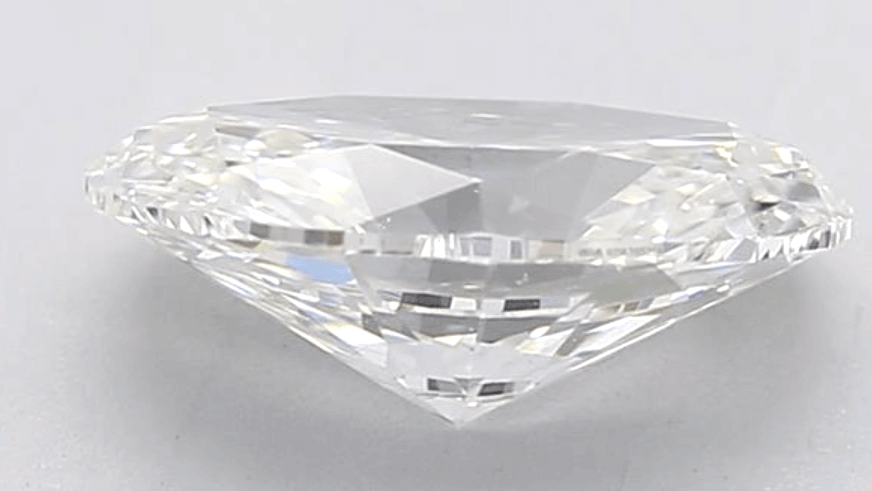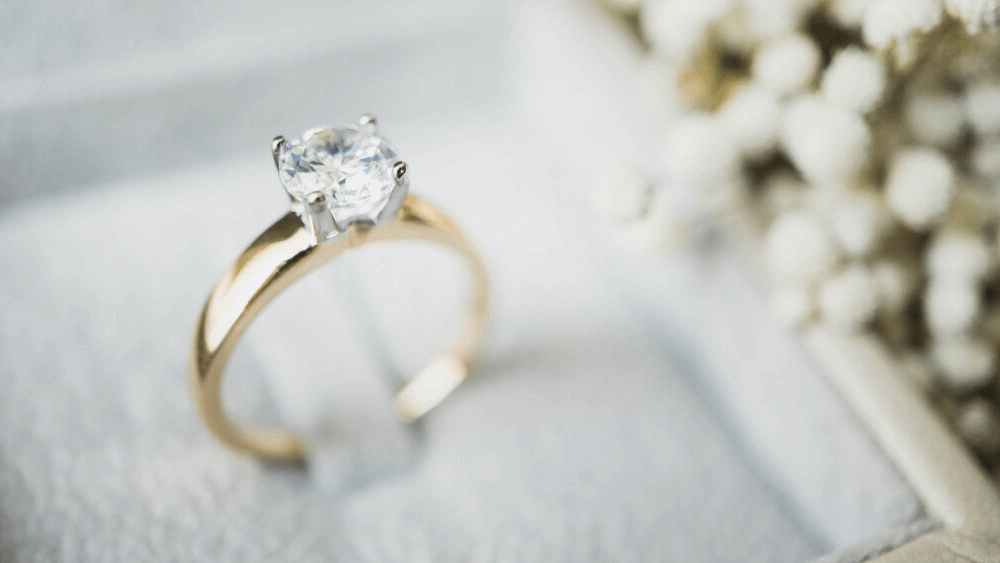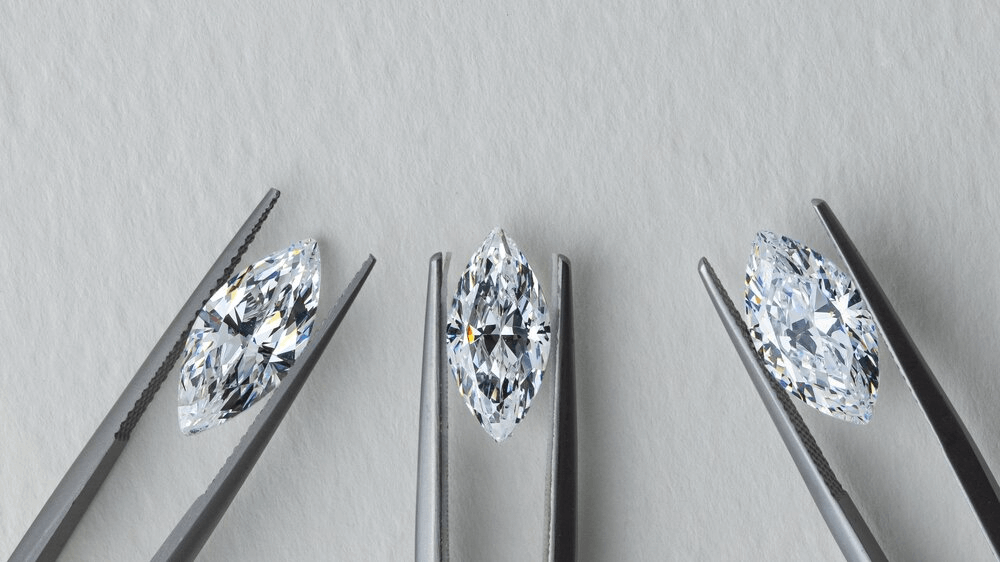Master The Secrets Of Diamond Proportion (Ratio)

By Gary A.

Edited by Olivia H.
Published Sep 18, 2021
Edited on Dec 18, 2024
When it comes to maximizing brilliance, diamond proportion and ratio plays a crucial role in ensuring your stone sparkles at its best—are you ready to find out how this affects your engagement ring choice?

- 6 Quick Tips for Navigating Diamond Proportion
- Introduction to Diamond Proportion and Engagement Rings
- Ideal Diamond Proportions for Different Cuts
- Calculating the Perfect Diamond Ratio with Our Diamond Proportions Chart
- Calculating the Perfect Diamond Ratio with Our Diamond Proportions Chart
- Our Expert Take
- 10 FAQs
Before we dive deeper into the specifics, here are some practical tips to help guide your decision-making process:
6 Quick Tips for Navigating Diamond Proportion
- Tip 1: Check the Polish Grade Look for High Polish Grades: Prefer diamonds with a polish grade of “Excellent” or “Very Good.” These grades ensure that any surface flaws are minimal and not visible to the naked eye, thus maintaining the diamond’s brilliance. GIA Certification: Ensure the diamond comes with a GIA certificate which includes the polish grade. This certification is a reliable indicator of the diamond’s overall quality.
- Tip 2: Examine Under Magnification Use a Jeweler’s Loupe: Inspect the diamond under a jeweler’s loupe or microscope. This allows you to see any surface imperfections that might have occurred during the polishing process. Look for Smoothness: A well-polished diamond should have smooth facets. Any roughness or irregularities can affect the way light interacts with the diamond, reducing its sparkle.
- Tip 3: Observe Light Performance Brilliance and Fire: Observe the diamond’s brilliance (white light reflections) and fire (colored light reflections). A good polish enhances these qualities, making the diamond more vibrant. In Different Lighting: Look at the diamond under different lighting conditions. A well-polished diamond maintains its sparkle across various lighting environments.
- Tip 4: Surface Inspection No Visible Flaws: Ensure that the diamond’s surface is free of visible flaws like scratches or pits. Even minor surface flaws can impact the light performance of the diamond. Consistency in Facets: Check for consistency in the facets’ appearance. Each facet should be symmetrical and well-defined, contributing to the overall aesthetic of the diamond.
- Tip 5: Factor in Diamond Shape Shape and Polish Relation: Different diamond shapes may have varying polish considerations. For example, shapes with more facets, like round brilliants, might highlight polish imperfections more than others. Shape-Specific Inspection: Tailor your inspection based on the diamond’s shape. Each shape has unique attributes that can be enhanced or diminished by the quality of the polish.
- Tip 6: Consider the Setting Setting Impact: The ring setting can either accentuate or hide certain polish aspects. A setting that exposes most of the diamond (like a prong setting) will require a higher polish quality for optimal appearance.
Now that you’ve got these practical tips, use Jeweler AI below to find the perfect engagement ring that suits your style and budget:
Introduction to Diamond Proportion and Engagement Rings
The way that a rough diamond is cut is by far the most significant factor behind its sparkle. Yes, it’s simple enough to learn the different shapes diamonds are cut into – and which cuts sparkle the most, and which ones you prefer – but, if you stop there, you’ll be overlooking the most important factor of all: proportion.
What do we mean by that? Well, two emerald cut diamonds can look totally different based on their proportions – despite the fact that they are both cut according to the same shape.
The same holds for round diamonds and fancy cut diamonds – even an eye clean, colorless diamond can be totally derailed by poor proportions, and appear pretty lifeless alongside one with ideal proportions.
Yes, it’s another complication, but one that you’ve got to go face-to-face with if you want to get the best possible diamond for your budget.
Diamond Proportions Explained
The ratios that exist between the diamond’s table, depth, and width, after it has been cut into the appropriate shape. These are represented in percentages, and used to determine the strength of a diamond’s cut, its value.
One of the biggest challenges diamond cutters face is determining how to create the biggest possible diamonds from an irregularly shaped rough stone – while also avoiding any major inclusions contained within it and, of course, ensuring good proportions.
A diamond’s value increases significantly with size, but getting the largest possible diamond out of the rough stone would typically mean creating a diamond with some very strange proportions. It may be far too deep, with a very long pavilion, or it may be too shallow, with a table percentage way too high to give a good sparkle.
Either way, the best approach is often the one that balances size with proportion. The biggest possible proportioned diamond will prove most popular among those looking to create beautiful diamond jewelry.
Impact of Ratios on Diamond Quality
Very important. In fact, probably the most important thing to search for, alongside eye cleanliness.
Diamonds with excellent proportions will deliver better light performance – or, more specifically, better brilliance, fire, and scintillation. It is all too easy for a diamond to be cut too shallow or deep and, in both cases, this will mean that less light is able to take the optimal pathway through the diamond, and out of the table.
As a shopper, understanding the way each diamond’s proportions will impact its visual appeal is essential, through it’s a little more complicated than memorizing the color and clarity grades. You’ve got to know what percentages to look for, and which ones to avoid entirely.
Ideal Diamond Proportions for Different Cuts
A GIA graded diamond with ‘Excellent’ or ‘Very Good’ proportions should be your focus during your search. The ‘right’ proportions depend entirely on the shape of the diamond, since what works perfectly for a Round cut diamond will look pretty bizarre on an Asscher or Emerald cut diamond. In any case, the perfect diamond proportions are those that maximize sparkle.
In a nutshell, good proportions will mean that a diamond is neither too shallow nor too deep, and neither too wide nor too narrow. Its structure will support its beauty, rather than obstructing it.
These ideal proportions will comprise depth and table percentages, the culet (lowest point), the girdle (where the crown meets the pavilion), and height to length ratio. Below, we will list the ideal cut diamond proportions for each diamond but, for now, we will look in closer detail at the ideal diamond cut proportions for the Round cut diamond, and for the Emerald cut diamond – two totally different shapes – to give you a good idea of the different proportions required to maximize sparkle.
Round Cut: A Study in Brilliance
The ideal proportions for realising the full sparkle potential of a Round Brilliant cut diamond is as follows…
| Excellent | Very Good | |
| Length to Width Ratio | 1.00 – 1.009 | 1.01 – 1.019 |
| Table | 56% – 59.9% | 54% – 55.9% Or 60% – 60.9% |
| Depth | 59% – 62.3% | 585 – 58.9% Or 62.4% – 63.5% |
| Culet | None | Very Small |
| Girdle | Thin to Slightly Thick | Very Thin to Slightly Thick |
The Elegance of Oval and Emerald Cuts
| Excellent | Very Good | |
| Length to Width Ratio | 1.35 – 1.44 | 1.30 – 1.34 Or 1.45 – 1.50 |
| Table | 60% – 65.9% | 58% – 59.9% Or 66% – 72.9% |
| Depth | 63% – 67.9% | 59% – 62.9% Or 68% – 69.9% |
| Culet | None | Very Small |
| Girdle | Very Thin to Slightly Thick | Very Thin to Thick |
Here, you can see that the table of an Emerald diamond with ideal cut proportions will cover more of the diamond’s width than the table of a Round diamond, also with ideal cut proportions.

The same is true of the Oval. The best diamond measurements will be very different than they are for a Round cut. This shape also features an elongated silhouette and has very different requirements for Length and Width ratio, depth, and table than a Round Brilliant.

Calculating the Perfect Diamond Ratio with Our Diamond Proportions Chart
Below, we have put together the ideal proportions (graded ‘Excellent’ by the GIA) for each diamond cut, so that you can approach your chosen shape with the right information at your side.
Remember, however, that an experienced jeweler will be incredibly well-versed in this subject, and won’t steer you in the wrong direction. They understand the importance sparkle holds for engagement rings better than anyone, so don’t panic about learning these numbers by heart.
| Length to Width Ratio | Table | Depth | Culet | Girdle | |
| Asscher | 1.00 – 1.029 | 60% – 65.9% | 63% – 67.9% | None | Very Thinto Slightly Thick |
| Cushion | 1.00 – 1.029 | 60% – 65.9% | 63% – 67.9% | None | Very Thinto Slightly Thick |
| Cushion (Rectangle) | 1.18 – 1.28 | 60% – 66.9% | 63% – 67.9% | None | Very Thinor Slightly Thick |
| Emerald | 1.35 – 1.44 | 60% – 65.9% | 63% – 67.9% | None | Very Thin to Slightly Thick |
| Marquise | 1.90 – 2.00 | 53% – 65.9% | 58% – 62.9% | None | Very Thinto Slightly Thick |
| Oval | 1.35 – 1.42 | 55% – 62.9% | 58% – 62.9% | None | Very Thinto Slightly Thick |
| Pear | 1.55 – 1.62 | 53% – 62.9% | 58% – 62.9% | None | Very Thinto Slightly Thick |
| Princess | 1.00 – 1.029 | 67% – 72.9% | 67% – 72.9% | None | Very Thinor Slightly Thick |
| Radiant (Square) | 1.00 – 1.029 | 61% – 69.9% | 61% – 67.9% | None | Very Thinor Slightly Thick |
| Radiant (Rectangle) | 1.22 – 1.32 | 60% – 66.9% | 63% – 67.9% | None | Very Thinor Slightly Thick |
| Round | 1.00 – 1.009 | 56% – 59.9% | 59% – 62.3% | None | Thin to Slightly Thick |
Our Expert Take
The wrong dimensions can undermine a diamond’s light performance, and turn an otherwise beautiful stone into something not worth your time.
Again, as we’ve said, it’s not like you’ve got to get these tables memorized. Your jeweler isn’t going to ask you to recite them like you’re back in kindergarten.
Even so, it’s massively helpful for you to go into the process of understanding the basics of diamond proportion, and why it is so important to anyone looking to buy the best possible diamond for their bride-to-be.
10 FAQs
- Q: What is Diamond Proportion Ratio?
- A: Diamond proportion ratio refers to the relationship between various dimensions of a diamond, such as its table size, depth, and width. These ratios are crucial in determining the diamond’s overall symmetry, brilliance, and visual appeal.
- Q: Why is the Length-to-Width Ratio Important in Diamonds?
- A: The length-to-width ratio is vital in defining the shape and appearance of a diamond. It helps determine how elongated or compact a diamond looks, especially in shapes like oval, marquise, or emerald.
- Q: How Can I Tell if a Diamond’s Proportions are Ideal?
- A: Check the diamond’s grading report for its proportion measurements and compare them to standard proportion charts for that specific shape. Ideal proportions maximize brilliance and fire in a diamond.
- Q: Does a Larger Table Percentage Mean More Brilliance in a Diamond?
- A: Not necessarily. While the table size impacts how light enters the diamond, an excessively large table can compromise the balance of light dispersion, affecting the diamond’s fire and overall sparkle.
- Q: What is the Ideal Depth Percentage for a Round Diamond?
- A: The ideal depth percentage for a round diamond typically ranges from 59% to 62.3%. This range ensures optimal light reflection within the diamond, enhancing its brilliance.
- Q: How Does Girdle Thickness Affect a Diamond’s Quality?
- A: The girdle thickness affects a diamond’s durability and how it is set in jewelry. A girdle that’s too thin can be prone to chipping, while a very thick girdle might make the diamond appear smaller and impact its light performance.
- Q: Can Two Diamonds with the Same Carat Weight Have Different Sizes?
- A: Yes, two diamonds of the same carat weight can appear different in size due to variations in their cut, depth, and table size. These factors influence how large the diamond appears when viewed from above.
- Q: Is Symmetry More Important Than Carat Size?
- A: Symmetry plays a crucial role in a diamond’s beauty and brilliance. While carat size is important, a diamond with excellent symmetry will often be more visually appealing than a larger diamond with poor symmetry.
- Q: Should I Always Choose a Diamond with Ideal Proportions?
- A: Ideally, yes. However, personal preference also plays a role. Some may prefer the unique look of a diamond with non-standard proportions, even if it means slightly compromising on brilliance or fire.
- Q: How Does the Pavilion Angle Affect a Diamond’s Appearance?
- A: The pavilion angle influences how light is reflected within the diamond. An optimal pavilion angle ensures that light is efficiently bounced back through the diamond’s table, enhancing its sparkle and brightness.
Discover your perfect engagement ring with Jeweler AI‘s expert guidance on diamond proportion ratios and measurements. Start your journey to brilliance now!
FOLLOW-UP GUIDE SERIES












